Dau Falls Travel Guide: All You Need to Know Before Chasing Samboan’s Highest Waterfall
Adrenaline Romance Rock climbers. Mountaineers. Sweethearts on adventure. Adrenaline Romance is a photoblog that belongs to a loving couple who has an eternal lust for adventure. The blog contains experiences, tips, itineraries, and other useful information regarding adventuring in the Philippines and beyond.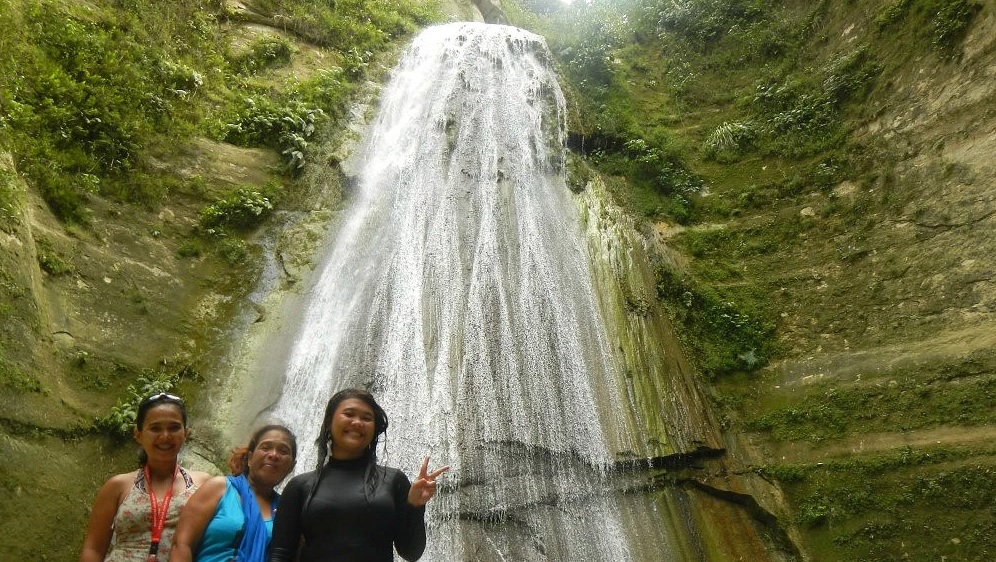
Contributed by Adrenaline Romance
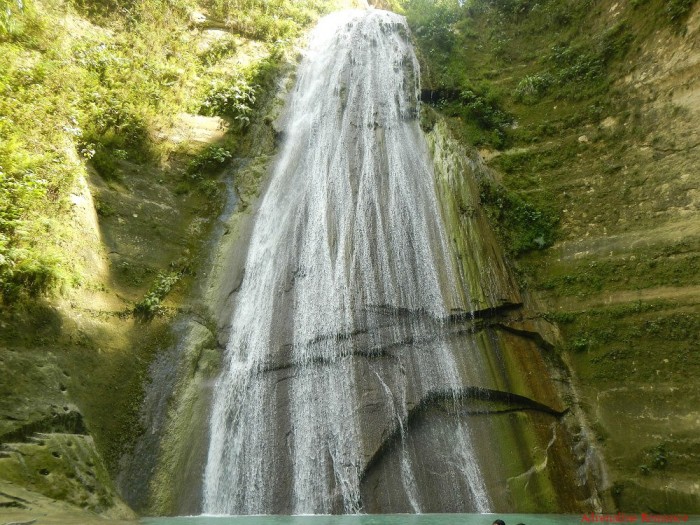
For most Filipinos, staving off the intense tropical heat means going to the beaches. But what if you want to do something different? What if you are tired of crowded beaches but still want to go some place where you could cool off? Then head off to Samboan, the beautiful waterfall capital of southern Cebu. There you can take a cool, refreshing plunge in their pristine and magnificent waterfalls. One of those stunning natural wonders is the picturesque Dau Falls.
Also read: 13 Awe-Inspiring Waterfalls in the Philippines You Must Visit
Spotting the road to Dau Falls was easy. All we needed to do was to look for this prominent sign just right beside the highway. Among the Samboan’s waterfall trilogy, Dau Falls is the farthest as it is located in Suba, which is a mountain barangay.
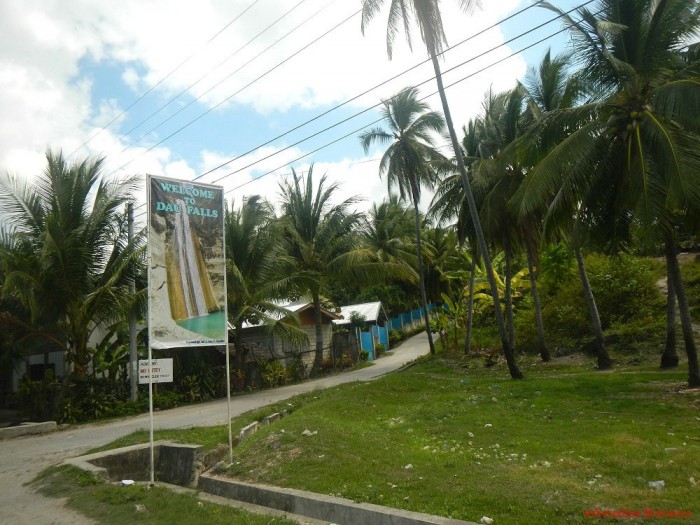
Expansive coconut groves and corn farms were all around us. These are indications that Samboan has a large and thriving agricultural industry.
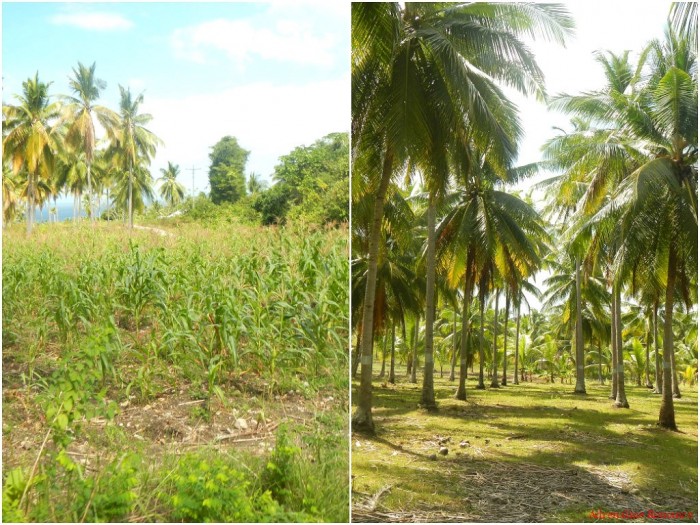
A quarter of an hour later, we arrived at the jump-off point to Dau Falls. The officials at the registration centre provided us a local guide to accompany us to the waterfall. After taking a quick inventory of our stuff, we commenced the 30 to 45-minute trek to Dau Falls, with the trail head at the back of a local community.
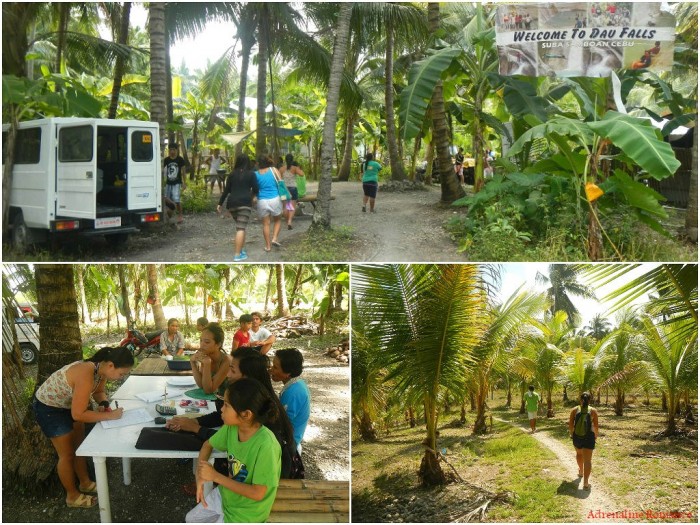
The first part of the trail skirts the side of a large hill. Open and devoid of trees, we were at the mercy of the scorching sun. But that exposed terrain provided us a boon—a magnificent view of the lowlands, Tañon Strait, and faraway Negros Island.
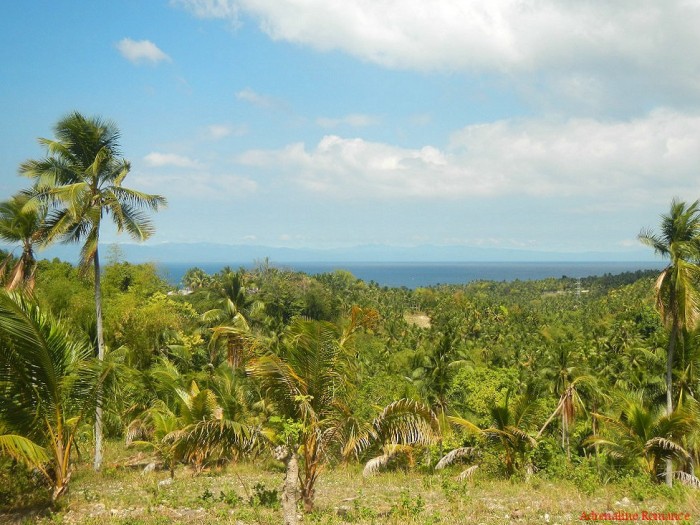
Mercifully, the sun-baked section of the trail was short. Pretty soon, shadows of coconut grove’s crowns offered our small group minute respites from the sun’s glare.
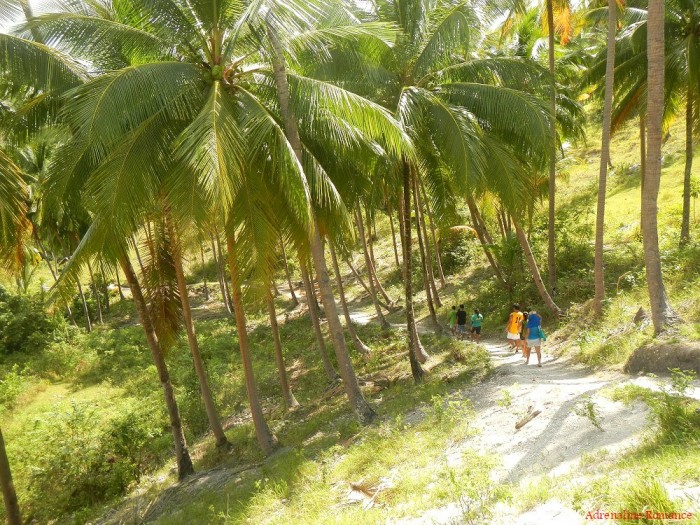
Check that out—a cool bamboo bridge. According to our local guide, the bamboo bridge was originally constructed so farmers and schoolchildren from neighbouring barangays won’t have to wade in the river below. It’s cool and organic design, however, unexpectedly made the bridge a popular local attraction.
Our guide also mentioned that Dau Falls was named after a large dau tree at the riverbank. Sadly, the tree is now non-existent, having fallen victim to man’s axe.
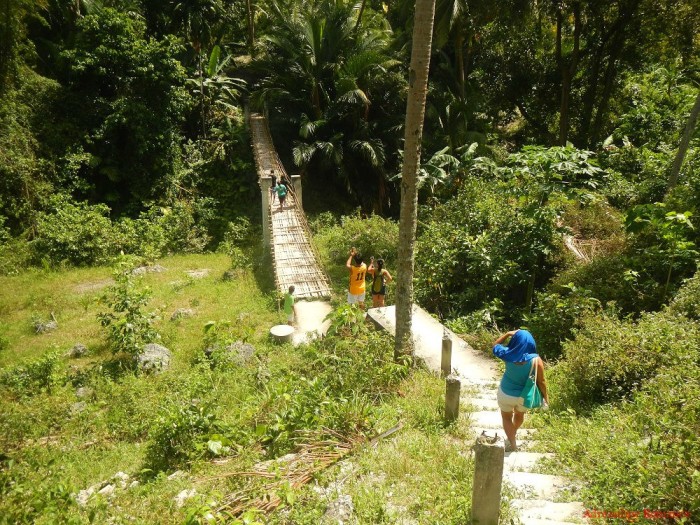
Don’t be fooled by its broad width and metal cables. Yes, the bridge is sturdy and safe. But it squeaks and sways a lot when people step on it. Shaking that bridge is a cool way to prank your jittery friends, don’t you think? Hahahaha!

The start of the real challenge is right at the edge of this riverbank. Coated by a thin film moisture and a layer of moss, the trail is both rocky and muddy. In fact, I actually slipped off the trail and into the river!
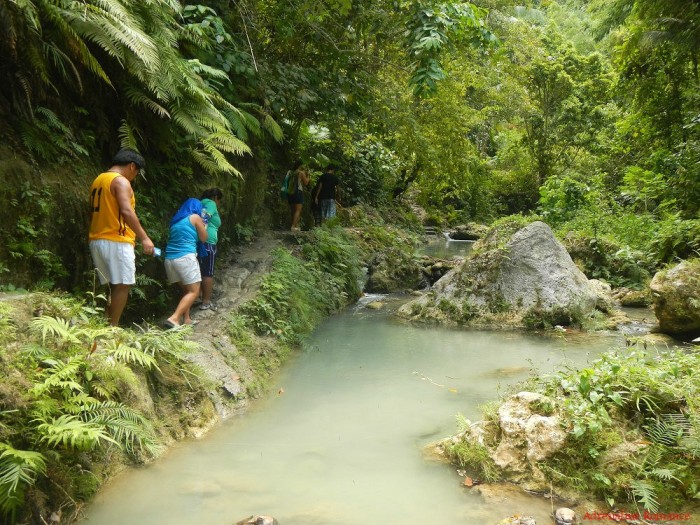
After recovering from embarrassment from the clumsy fall, I continued upstream to catch up with the group. As you can see, this river is amazingly pristine and beautiful despite being frequently visited by tourists and locals alike.
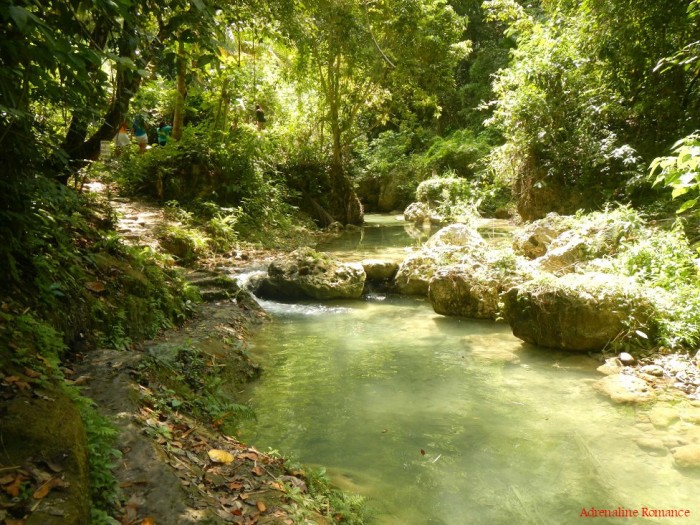
Soon, the muddy, rocky trail merged into the river proper, and we had to wade in the cool, rushing water. The river is sandwiched in this small canyon that is lined with ancient roots and slick rock walls.
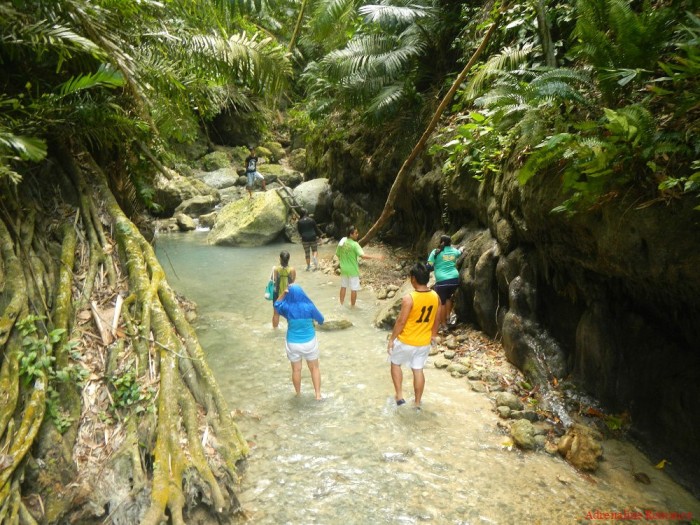
Locals placed a fixed rickety bamboo ladder against a wall of boulders so guests won’t have to scramble up the slippery rocks. Watch your step, and don’t put all your weight on the rungs. The ladder’s rungs have become soft after being soaked with water for a long time.
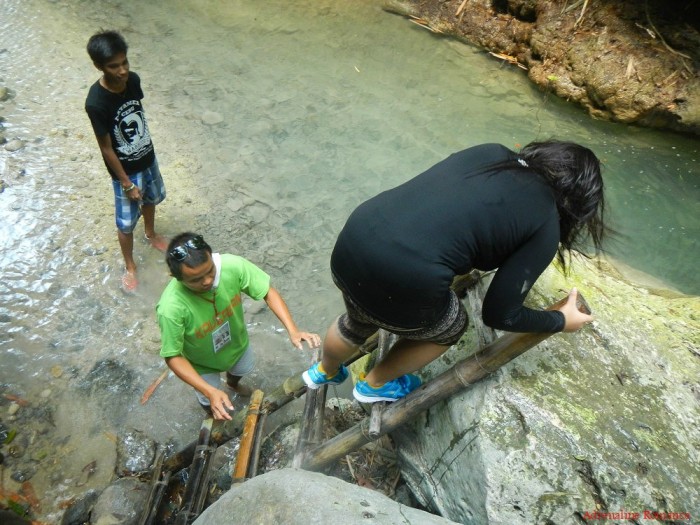
Sweet and refreshing mountain spring water! Natural spring water contains fluorides, mineral salts, and iron which are good for the body. Locals used a piece of bamboo to collect and channel this small spring flowing with fresh water from the mountains.
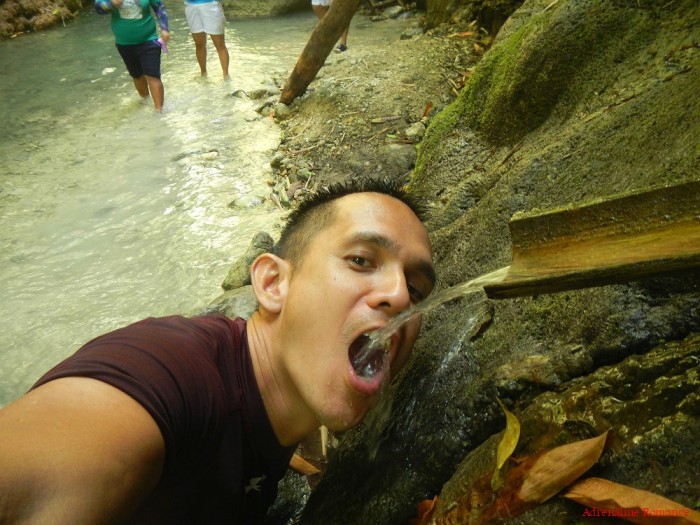
We also passed by a riverbank filled with giant rocks and small tiers of waterfalls. Note the water’s milky green colour.

During the huge 6.7-magnitude earthquake in Negros last 2012, a huge slab of earth fell off from this cliff. After three years, the subsoil left from this landslide is still visible—and clearly unstable.
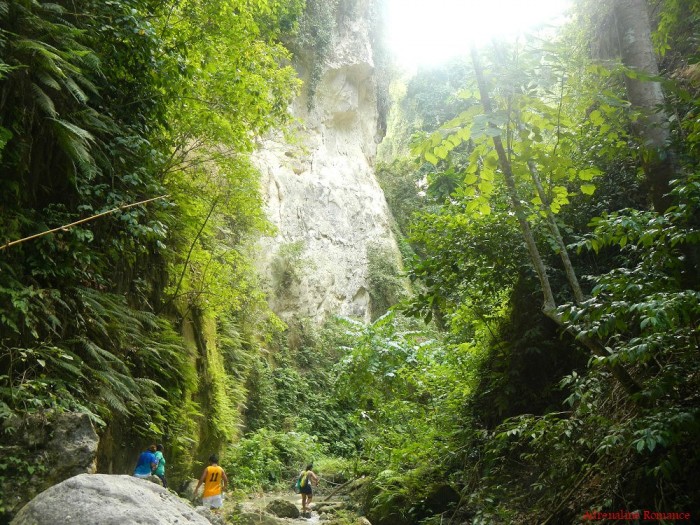
The trail merges into the river again, and we entered another canyon. The moss makes the walls unclimbable.
From here, we could hear the distant rumbling of rushing water, which means that there is something large and powerful ahead of us.
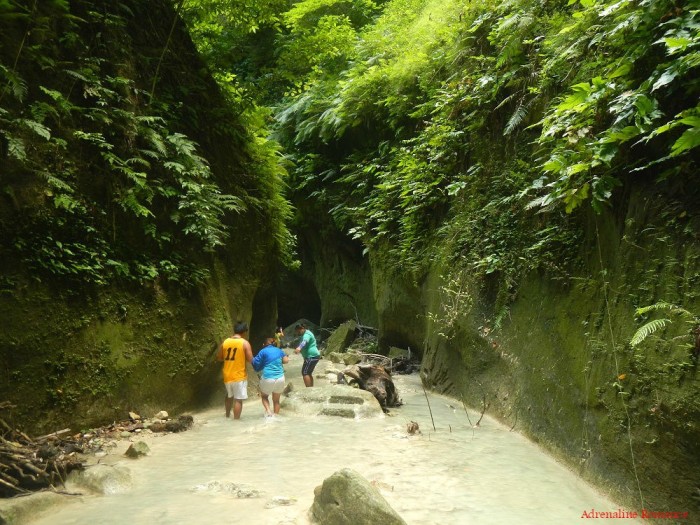
Be careful! The moisture-laden pathway, which was hand-carved on canyon’s rock, is extremely slippery. For those who don’t want to get wet, walking through this path would make them totally nervous.
But for us who love adventure, it doesn’t matter if we slip. We can accidentally fall or purposely dive into that wonderful channel of cool water below. Well, that’s what Alexa and I did! And check out that cascading water at the pool’s head. That’s a natural water slide!
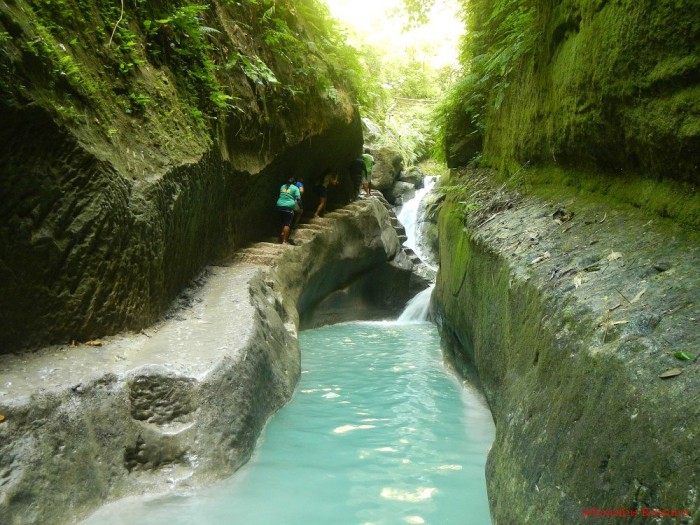
After successfully walking down the slippery pathway, which also involved climbing near-vertical steps, we finally got a stunning view of the gorgeous Dau Falls. This is perhaps one of the most picturesque vantage points of the river.
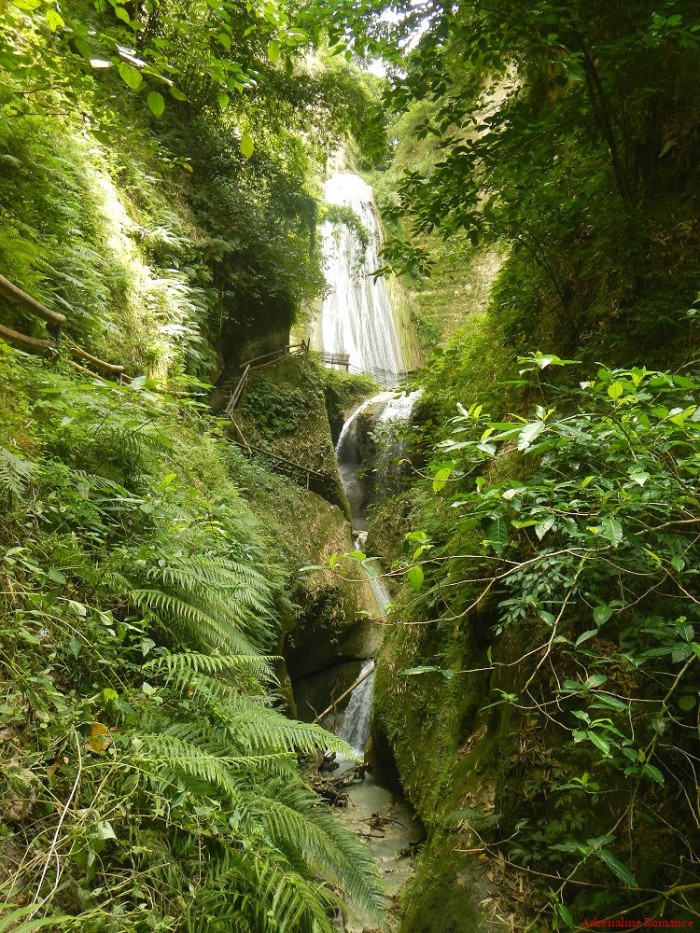
The slick pathway clings at the side of a deep ravine. Note that the rickety bamboo fence is not meant to protect you from an injurious fall; it just marks the very edge of the path. Don’t, by any means, lean on it!
Sometime in the distant past, this gigantic boulder fell from above and blocked the water’s flow. Sweetie stood near the foliage-encrusted boulder for scale. Behind the boulder is also a noisy secondary waterfall that is several feet high.
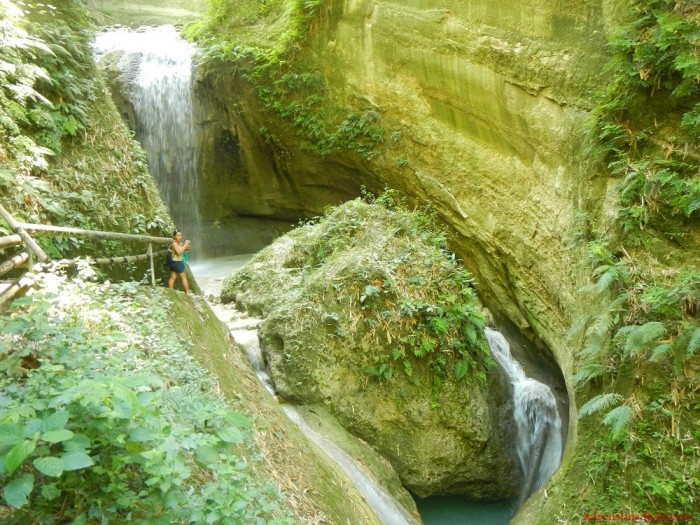
A few more steps up then we were in front of the towering Dau Falls, which is part of Samboan’s famous waterfall trilogy. From our reckoning, the main tier of Dau Falls rises at almost a hundred feet, which makes it the highest waterfall in Samboan.
Wonders of Mother Nature such as this waterfall never fail to amaze us.
Also read: 12 of the Most Awe-Inspiring Waterfalls Around the World
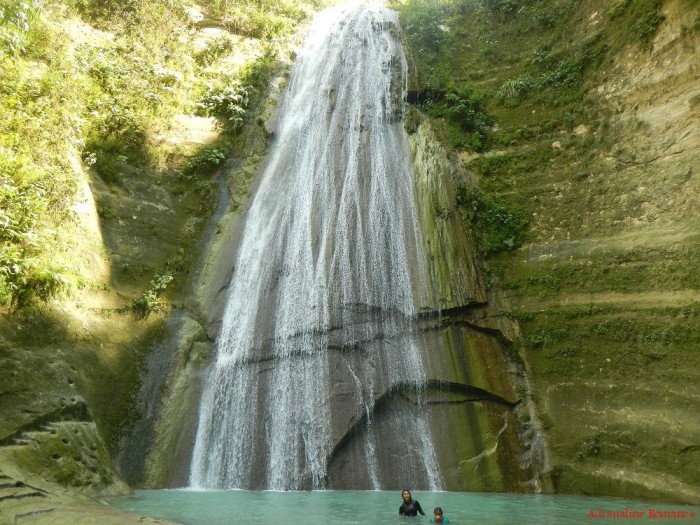
Here’s another view of the beautiful waterfall from a side trail. You can see just how smooth the bedrock is. If there’s a solid rock or large tree at the top of the waterfall, it could be used as an anchor for a rappel line. That should be really fun and another winning come-on for Dau Falls.
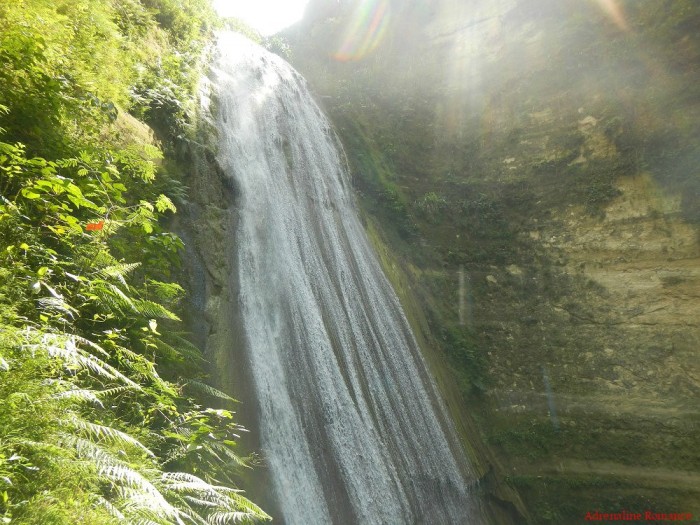
This is a perfect example of a slide waterfall in which the falling water maintains contact with the bedrock.
According to our guide, Dau Falls’ bedrock was perfectly smooth. But the 2012 Negros earthquake shook off huge slabs of the bedrock, leading to its present uneven appearance.
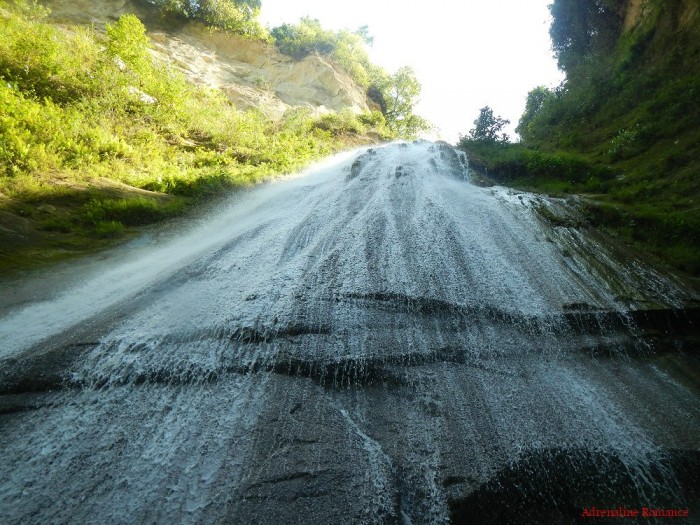
At the bottom of the main tier is a shallow chest-high natural pool where visitors can take a refreshing dip. Just be careful in getting to the pool’s edge since the steps are very slippery.
Stay away from the lip of the pool; locals actually placed an embankment of rocks to mark the edge. That’s because the lip leads to the very top of the tall secondary falls right below the main tier of Dau Falls. Our guide warned us that a few guests have been injured by falling off from the lip of the pool; they backed off too far out to take selfies. That’s why locals erected the rock embankment.
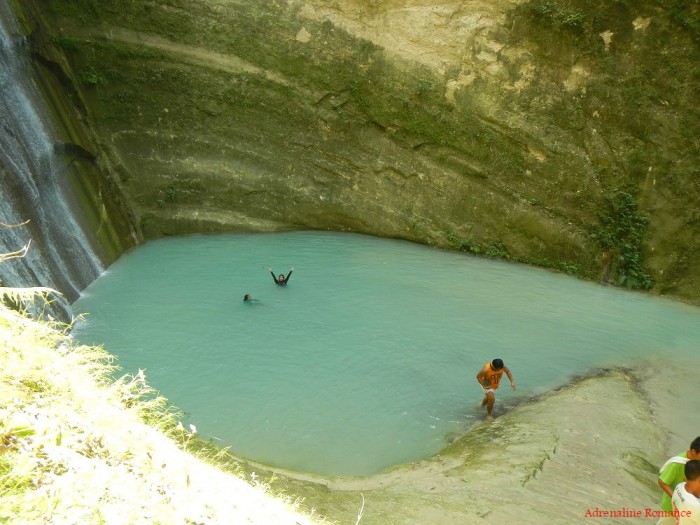
It is quite obvious that Sweetie, Alexa, and her mom had a great time frolicking in Dau Falls. But after more than an hour of dipping in the cool, refreshing water, we couldn’t ignore the rumblings of our stomachs! It was almost noon, and it was time for lunch!

We went back the way we came. This time, I didn’t slip and fall into the river. Hehehe!
We were able to reach the jump-off in less than 30 minutes. Yes, we were that hungry!
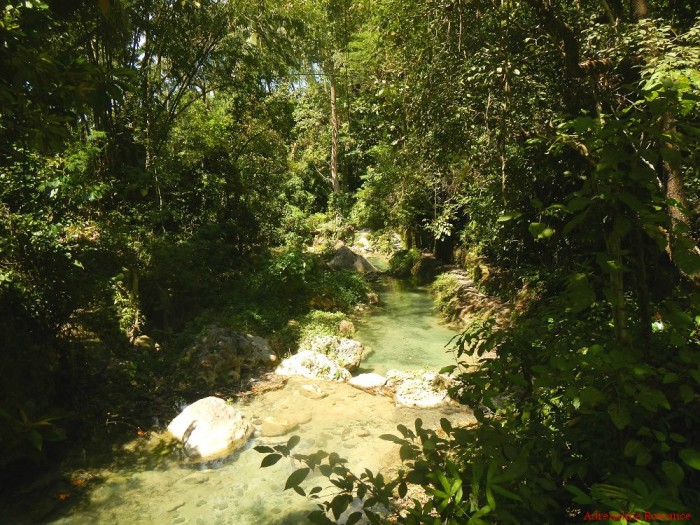
The grandiose Dau Falls is truly a great reward for an exciting river adventure. The locals may have altered the landscape to make the trek doable and safer for everyone, but they did it the right way. The developments are in perfect harmony with the natural landscape.
This summer, rather than visit the beach, why not do something different? Cool yourself from the summer heat at Dau Falls!
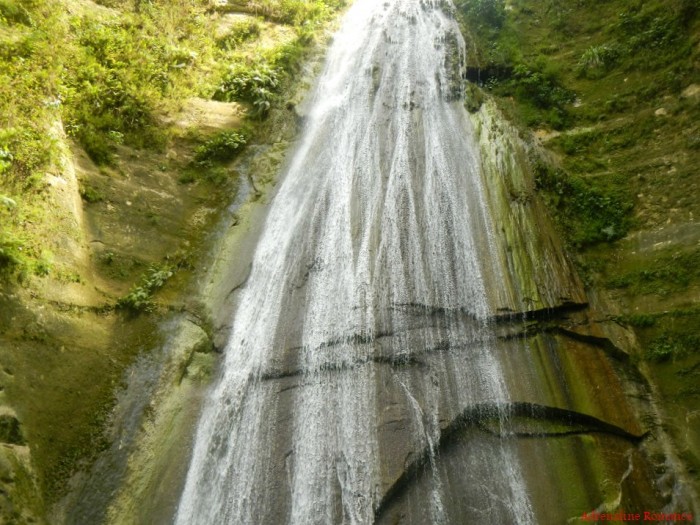
Budget
1. ₱170 per person
Bus fare (non-airconditioned) from Cebu City to Samboan (same rate applies on the return trip)
2. ₱TBN (to be negotiated)
Habal-habal fare from Poblacion/highway to Dau Falls. According to the officials when we interviewed them, there is a fixed fare of ₱25 per person for tricycles going to the area. However, you will have to endure a long waiting time.
Most locals opt to ride a habal-habal, but they don’t have a fixed rate; it’s usually ₱30 to ₱50. If you are a visitor, they will most likely quote you a higher rate than usual at around ₱150 to ₱200 per person. Officials in Barangay Suba admitted that this is their biggest concern since they can’t control habal-habal rates.
To alleviate this problem, check out Tip 2.
3. ₱20 per person – registration fee
*We did not include our expenses for snacks, tips, and other fees in this rate sheet as you may have different needs, preferences, itineraries, and sharing scheme from us. Note that all figures are subject to change without prior notice.
Tips
1. For more information, guideship, and assistance, get in touch with Samboan Tourism Officer Irwin P. Gamallo at 0925-5061879. You can also search his name on Facebook.
2. To save money and to make the most of your trip, we highly recommend doing the Samboan waterfall trilogy. Head off to the Aguinid visitor’s centre, and tell the guides there that you want to have a packaged habal-habal transportation to take you to the three main waterfalls in Samboan—Dau, Binalayan, and Aguinid Falls.
That will cost you ₱250 per person, which includes waiting time. This excludes entrance fees to the waterfalls.
3. Watch your step because the path is very slippery.
4. Do not put your weight on the bamboo fences on the steep, slick trail towards Dau Falls. They are not meant to hold your weight; they are markers that indicate the edge of the ravine.
5. Pack light but do bring the following:
Water (at least 1 litre)
umbrella, hat, or malong (sun protection)
swimwear, rash guard, cycling shorts
trekking sandals or shoes
extra clothes
snack
extra money for emergencies
6.Waterproof your stuff by wrapping them in plastic bags before putting them in your backpack.
7. Do not litter, and bring all your garbage with you.
Also read: My South Cebu Trip: 4 Days of Great Adventure with My Barkada